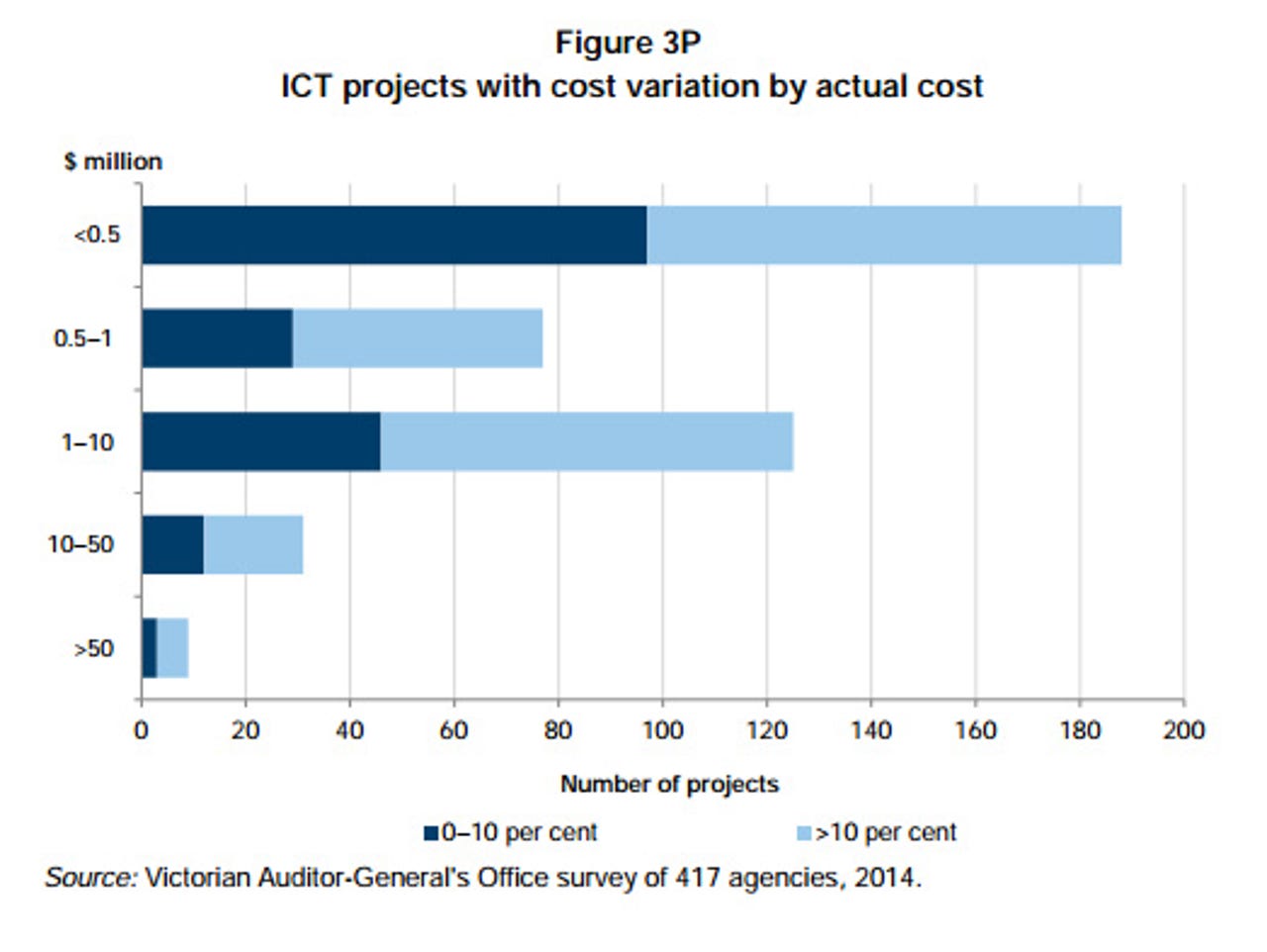Victorian govt can't prove value of IT spending: Auditor-general

Victorian Auditor-General John Doyle has called on the Victorian Department of Premier and Cabinet to keep a closer eye on IT spending across the state, as government agencies were slammed for their tracking of IT projects.
A report (PDF) compiled by Doyle and tabled in parliament on Wednesday revealed that the government has no central oversight of IT spending in government, so he was forced to "seek basic information" on IT projects and spending from 417 different government agencies, something that Doyle noted "should not be [his] responsibility".
"But because the central agencies tasked to provide effective leadership have not taken on this responsibility, and particularly because no public value has been shown for significant ICT investments, I have come in to seek accountability," he said.
Doyle said smaller agencies were compliant, but larger agencies "initially questioned the benefit of identifying and reporting their ICT expenditure and determining the status of their ICT projects".
Doyle was "particularly disturbed" that some agencies had submitted "clearly incomplete and inaccurate" information.
He said that the overall lack of transparency made it difficult to assess whether IT investments have enhanced government services or addressed the problems they were designed to resolve.
Doyle found that -- contrary to the 2010 published Ovum estimate of IT spending in the Victorian government of between AU$1 billion and AU$1.5 billion -- the Victorian government had been spending an average AU$3.02 billion each financial year over the past three financial years. This means that an average of 4.3 percent of annual state operating expenditure was spent on IT.
The top two agencies for IT spending were the former Department of Education and Early Childhood Development, at an average of AU$256.3 million per year, and Victoria Police, at an average of AU$213.6 million per year.
Doyle said that the overall spending figure was conservative, because it did not include spending from the former Department of Transport, Planning, and Infrastructure in the 2011-12 financial year, and did not include Public Transport Victoria's expenditure on the troubled myki ticketing system.
Government slammed for project tracking
Doyle reported that in addition to the difficulties he faced in determining overall IT spend, he also ran into more challenges in ascertaining the state of IT projects in the government. He said one major issue is that projects are often divided into smaller projects, without any overarching oversight to report back to the status of the larger project.
He also said that when projects are transferred between agencies, or responsibility for the project is across multiple agencies, there is not always a transfer of project records.
"In many instances, the new responsible project manager is unable to give project information, such as the original project costs or business cases, without having to seek the previous project manager," he said.
"This was true even for major ICT projects costing over AU$50 million."
Where agencies were tracking the costs of ongoing projects, Doyle found that some components -- such as staff training and upgrades to existing systems -- were not included in the tracking costs.
"Agencies' default position appears to be to monitor only costs directly attributable to the project, like contract price from approved suppliers and the fees charged by external ICT organisations," he said.
"However, ICT projects need to be approached as business transformation projects, not as siloed technology updates, and therefore all costs incurred must be captured and reported.
"Without knowing full actual costs, it is not possible for agencies and entities to assure parliament and the Victorian community that its ICT projects represent value for money."
Of the 1,249 reported IT projects across network, core business, management, and telecommunications, the auditor-general noted that approximately AU$4 billion worth of projects are in progress or have been completed.
The government spent over AU$100 million on terminated projects, including AU$59.4 million on the terminated Department of Justice's Integrated Courts Management System, which ended in 2012 due to going over time and over budget.
Doyle found that 430 projects, or 35 percent of projects, are over budget, with 43 percent of these projects exceeding their budget by less than 10 percent, and the remaining 57 percent exceeding their budgets by between 11 percent and 649 percent.
Doyle also said that in the response he received from Public Transport Victoria (PTV) on the most expensive IT project -- the myki electronic ticketing system -- the agency initially said the project had cost AU$87.9 million. PTV then advised that the project cost AU$628.8 million. The actual cost for myki was AU$738.8 million.
Similarly, HealthSMART and the Registration and Licensing projects were also undervalued by their respective departments.
A total of 50 percent of the 1,249 projects were completed after their due date, or are due to be completed after initially planned.
Latest Australian news
Doyle noted that responsibility for IT had been transferred twice in his 18 months in the role, from Treasury and Finance to State Development, and now under the new Labor government in the Department of Premier and Cabinet.
He recommended that the department now provide leadership and guidance to agencies for monitoring IT projects and IT spending, and floated the idea of following Queensland and other governments in developing a digital dashboard to track IT spending across government.
Doyle warned that the report tabled on Wednesday is just the beginning of a long assessment process.
"Next month, I will report on this situation and describe the current governance arrangements and impact. Governance weaknesses have been a recurring issue revealed in departments over many years. Leadership in this aspect of ICT is needed," he said.
"This audit does not end here. In subsequent reports, I will focus on examinations of the performance of selected ICT projects. The survey component of the audit will also be repeated periodically to ensure that the information collected remains current and relevant."
